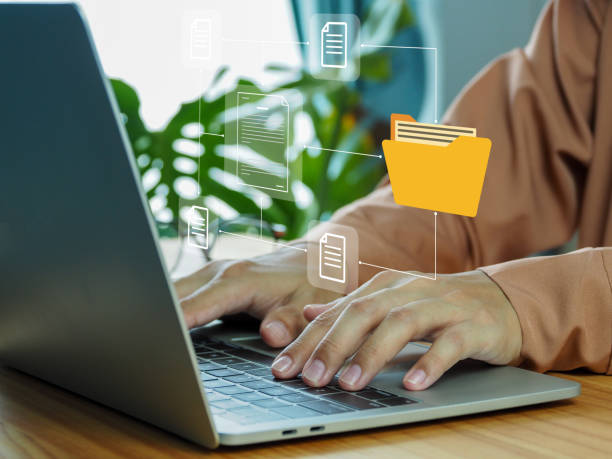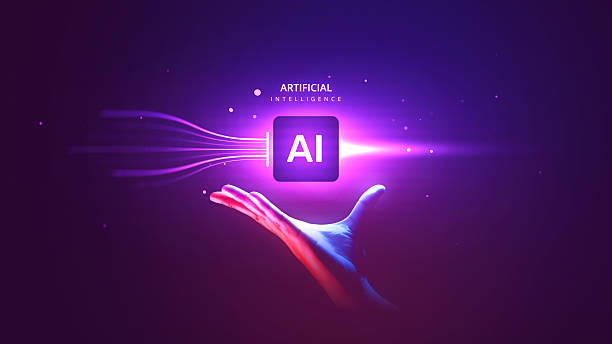Introduction to On-Page SEO and Its Critical Importance
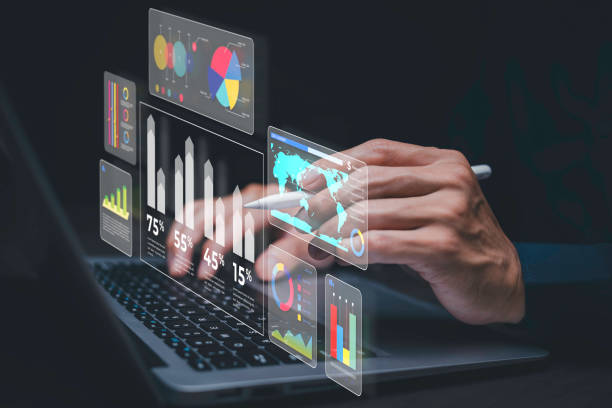
In today’s competitive web world, a website’s visibility in search results is of paramount importance.
On-Page SEO, or on-page optimization, is a set of actions taken to improve the ranking of a web page in search engines.
These actions directly relate to the website’s content and internal structure.
In fact, On-Page SEO is the foundation of any successful SEO strategy, and without it, even the strongest external link-building cannot be effective.
Search engines like Google pay special attention to internal page signals to provide the best and most relevant results to users.
These signals include the use of appropriate #keywords, content structure, loading speed, and user experience.
Proper understanding and implementation of #On_Page_SEO principles not only help search engines better understand your content but also improve user experience, which is itself a crucial ranking factor.
This section offers an explanatory and educational approach to getting started with on-page SEO.
Ignoring this aspect of optimization can mean losing a significant volume of organic traffic.
By investing properly in this area, your website will not only perform better now but also become more resilient to future algorithm changes.
In this article, we will delve deeply into various aspects of On-Page SEO so you can optimize your website effectively.
Did you know that your company’s website is the first point of contact for 75% of potential customers?
Your website is the face of your brand. With **Rasawweb**’s corporate website design services, build an online presence that earns customer trust.
✅ Create a professional and lasting image for your brand
✅ Attract target customers and boost online credibility
⚡ Get a free consultation from **Rasawweb** experts!
Keyword Research for On-Page SEO: Finding the Heart of Content
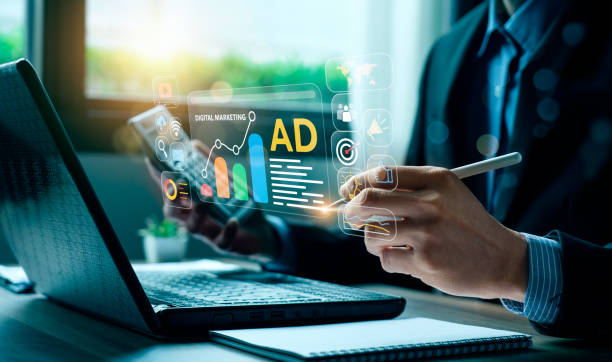
Keyword research is the backbone of any On-Page SEO strategy, helping you to pinpoint exactly what your audience is searching for.
This process goes beyond finding high-volume terms; it involves understanding the intent behind searches (User Intent) and finding keywords that not only have good search volume but also offer reasonable competitiveness for you.
For instance, #long_tail keywords, or longer keyword phrases, usually have a more specific search intent and can drive highly targeted traffic to your website.
Using keyword research tools like Google Keyword Planner, Ahrefs, or Semrush is crucial for identifying these keywords.
These tools provide information such as search volume, competition level, and related keywords.
Our approach in this section is a comprehensive and specialized guide to using these tools and extracting the best keywords for each page.
After identifying primary and secondary keywords, you should naturally and purposefully integrate them into your content, rather than simply forcing them into the text (Keyword Stuffing).
This section also helps you understand how to optimize #keywords for various content types such as blog articles, product pages, and service pages.
Ultimately, strong keyword research enables you to create content that is not only understandable to search engines but also answers users’ questions, which is a core pillar of successful On-Page SEO.
Optimizing Title and Meta Descriptions: The First User Encounter
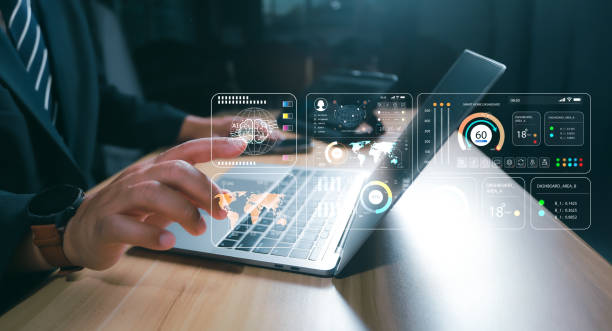
The Title Tag and Meta Description are the first elements users see of your website on the Search Engine Results Page (SERP).
These two elements play a vital role in your Click-Through Rate (CTR) and directly impact #On_Page_SEO performance.
An engaging #Page_Title containing the main keyword encourages users to click on your link, even if your search ranking is slightly lower.
Furthermore, the #Meta_Description is a captivating summary of the page’s content that draws users deeper into your website.
These descriptions should contain relevant keywords, but more importantly, they should encourage users to perform a specific action (such as reading an article or purchasing a product).
This section provides a practical educational and explanatory guide on how to write these elements while adhering to optimization principles.
The appropriate length for a title is typically around 50-60 characters, and for a meta description, it’s about 150-160 characters, but always remember that Google might truncate it or even choose a different meta description from your page’s content.
To ensure proper optimization, it’s recommended that titles and meta descriptions be unique for each page and naturally incorporate keywords.
Adhering to these tips not only helps search engines better understand your content but also increases your website’s appeal to users, marking a significant step towards improving your On-Page SEO.
Table 1: Examples of Title and Meta Descriptions
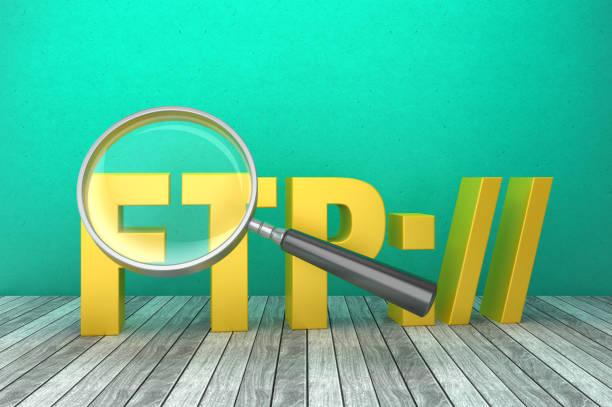
| Type | Example Title (Title Tag) | Example Meta Description | Key Notes |
|---|---|---|---|
| Good | On-Page SEO 2024: Comprehensive Guide to Website Optimization for Higher Rankings | Optimize your site for search engines with the comprehensive On-Page SEO 2024 guide. Expert tips for increasing organic traffic and improving user experience. Get started! | Keyword at the beginning, encourages clicks, includes Call-to-Action (CTA). |
| Average | Website Optimization for SEO | This article is about optimizing websites for search engines. It has good information. | Vague, lacks main keyword, low appeal, no CTA. |
| Bad | Home Page | Our website’s first page. | No useful information or keywords, very low CTR. |
Does your current e-commerce site design lead to losing customers and sales?
Rasawweb is your solution with modern and user-friendly e-commerce website designs!
✅ Significant increase in conversion rates and sales
✅ Create strong branding and gain customer trust
⚡ Get a free e-commerce website design consultation from Rasawweb!
URL Structure and Its Optimization: A Path for Better Search Engine Understanding
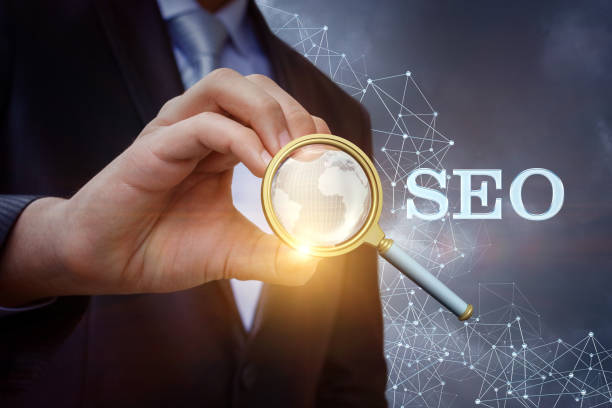
URL structure (page address) is a key #On_Page_SEO element often overlooked, yet it plays a significant role in search engine understanding and user experience.
An optimized URL not only helps search engines understand the page content but is also more readable and understandable for users.
This ultimately leads to increased trust and click-through probability.
Fundamentally, the #URL_Structure should be short, descriptive, and contain the page’s main keywords.
Using hyphens (-) to separate words instead of underscores (_) or spaces is recommended.
Also, avoid complex and ambiguous parameters in your URLs, and keep the URL structure as simple and logical as possible.
For instance, a good URL for an article about On-Page SEO could be YourSite.com/on-page-seo-guide.
This section provides a precise guide and explanation on how to design these structures.
Furthermore, having a logical hierarchy in URLs (like example.com/category/subcategory/page-name) is crucial for better site organization and helping search engine crawlers index your content more efficiently.
On-Page SEO requires attention to all details, and URL structure is one of these small yet powerful details that can make a big difference in your SEO performance.
This approach is especially vital for large sites with extensive content.
The Importance of Quality Content and Its Structure in On-Page SEO
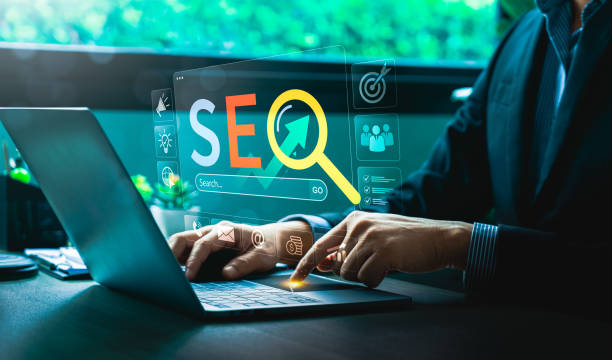
Content is king, and in the realm of #On_Page_SEO, this kingship is more evident than ever.
On-Page SEO is meaningless without high-quality and valuable content.
Search engines aim to provide the best answers to user queries, and your content must effectively meet this need.
Quality content means comprehensive, accurate, unique, and user-friendly content.
This content should thoroughly address its topic and answer users’ informational needs.
In addition to quality, #Content_Structure is also of high importance.
Proper use of headings (H1, H2, H3, etc.) helps search engines understand the structure and main topics of your content.
Furthermore, these headings and short paragraphs improve content readability for users.
Using lists, images, and videos also helps improve user experience and keep visitors on your page.
This section provides an analytical and specialized approach to creating superior content.
Your content should also naturally incorporate target keywords, rather than forcing them in.
Keyword density is less important than before, and today, the emphasis is more on “topic” and “comprehensive coverage” of subjects.
This approach shows search engines that you are a reliable authority in your specific field, which will lead to an improvement in your On-Page SEO ranking.
This is vital for any website, from a personal blog to a large news website.
Optimizing Images and Multimedia Files for Speed and SEO

Images and multimedia files are an integral part of the modern user experience, but if not optimized correctly, they can become a major obstacle to #On_Page_SEO.
#Image_Optimization involves several steps, the first and most important of which is compressing images without noticeable quality loss.
This significantly helps reduce #Page_Loading_Speed, which is itself an important ranking factor for Google.
Tools like TinyPNG or similar websites can be helpful in this regard.
The next step is using appropriate Alt Text (alternative text) for images.
Alt Text helps search engines understand image content, especially for users who use screen readers or if the image fails to load.
Alt Text should be descriptive and contain relevant keywords, but avoid Keyword Stuffing.
The image file name should also be descriptive and include keywords (e.g., on-page-seo-logo.png).
This section provides a comprehensive educational and guidance for optimizing all media files.
Additionally, using next-generation image formats like WebP and enabling Lazy Loading for images outside the user’s viewport significantly helps improve page speed.
All these actions combined will contribute to a significant improvement in your On-Page SEO and provide a better user experience for visitors.
These small details make big differences in the final results.
Internal Linking and Site Navigation Improvement: A Network for Success
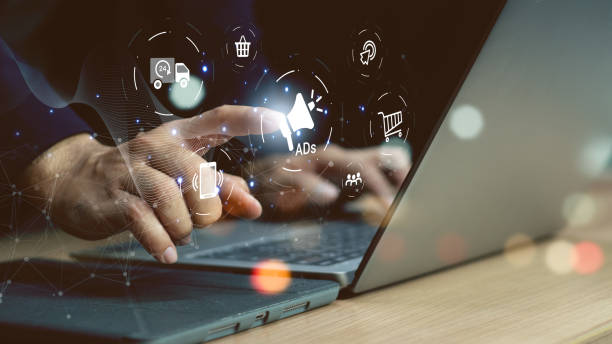
Internal Linking is one of the most powerful #On_Page_SEO tools that allows you to distribute SEO value across your website and improve user experience.
This process involves creating links from one page on your website to another page on the same website.
Internal links help search engines understand your website’s structure, identify relationships between different pages, and determine which pages are more important.
Additionally, these links help users easily navigate your site and discover more relevant content, leading to increased time on site and reduced bounce rate.
Using descriptive #Anchor_Text containing relevant keywords is of paramount importance.
For example, instead of “Click here,” use “Comprehensive Guide to On-Page SEO.”
This section provides an in-depth analytical and educational guide on effective internal linking strategies.
Creating a logical hierarchical structure (Hub and Spoke) where more important pages receive more links is highly recommended.
This strategy not only helps distribute “Link Juice” but also indicates to search engines which pages you consider to be of special importance.
A strong internal linking structure is the foundation of successful On-Page SEO, and without it, even the best content might not achieve high rankings.
This technique is also known as structural optimization and is a vital element in on-page optimization.
Did you know that 94% of a first impression of a company is related to its website design?
Rasawweb, by offering professional corporate website design services, helps you create the best first impression.
✅ Create a professional and trustworthy image for your brand
✅ Easier attraction of potential customers and improved online standing
⚡ Get a free corporate website design consultation
Table 2: Types of Internal Linking and Their Applications

| Link Type | Application | Impact on On-Page SEO | Example |
|---|---|---|---|
| Contextual Link | Linking to related content within the text of an article or page. | Increases SEO value of linked pages, improves semantic relevance, distributes Page Authority. | “To understand the concepts further, refer to our article on Keyword Research.” |
| Navigation Link | Links present in menus, footer, and sidebar of the site. | Helps search engine crawlers discover pages, improves user experience. | Main site menu: Home, About Us, Services, Blog, Contact Us. |
| Breadcrumbs Link | Showing the user’s path in the site hierarchy (e.g., Home > Category > Subcategory). | Increases URL readability, improves navigation, helps search engines understand structure. | Home / SEO Articles / On-Page SEO |
| Related Posts Link | List of related articles or products at the end of the page. | Increases user time on site, reduces bounce rate, discovers more content. | “Related Content: Technical SEO, Website Speed Optimization” |
User Experience (UX) and Core Web Vitals in On-Page SEO: Beyond Keywords
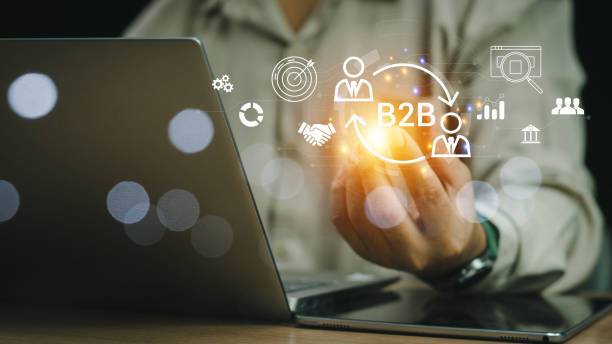
In recent years, search engines have increasingly focused on #User_Experience (UX) as a ranking factor.
This means that On-Page SEO is no longer just about keywords and backlinks, but also about ensuring your website provides an enjoyable and efficient experience for visitors.
Core Web Vitals are a set of specific Google metrics that measure the loading speed, interactivity, and visual stability of web pages.
These metrics include LCP (Largest Contentful Paint) for loading speed, FID (First Input Delay) for interactivity, and CLS (Cumulative Layout Shift) for visual stability.
Improving these metrics directly impacts your #Google_Ranking and #On_Page_SEO performance.
This section provides a specialized and news-oriented overview of Google’s latest updates in this area.
Websites with poor user experience, such as long loading times, unusable design, or unstable visual elements, may rank lower in search results.
To improve UX and Core Web Vitals, you should focus on factors such as image optimization, reducing the size of CSS and JavaScript codes, using a CDN, and responsive design.
Ultimately, focusing on UX is a win-win approach: both your users will be happy, and search engines will reward your website.
Comprehensive On-Page SEO means paying attention to all these dimensions for a strong online presence.
Frequently Asked Questions
| Question | Answer |
|---|---|
| What is On-Page SEO? | It refers to a set of actions performed within a website to improve its ranking in search engines. |
| Why is On-Page SEO important? | Because it helps search engines better understand your site’s content and structure, and it improves user experience. |
| What are the most important elements of On-Page SEO? | Title and meta descriptions, keywords, URL structure, quality content, image optimization, internal linking, and site speed. |
| How to optimize Title Tag and Meta Description? | The title should include the main keyword and be attractive, and the meta description should be a compelling summary of the content with relevant keywords. |
| What is the role of keywords in On-Page SEO? | Keywords help search engines understand what the page content is about and should be used naturally and intelligently in the text. |
| How is image optimization done for On-Page SEO? | By compressing the size, using descriptive file names, and filling the Alt tag with relevant descriptions and keywords. |
| What is Internal Linking and what is its use? | It’s connecting different pages of the site to each other. This helps distribute Page Authority and improves search engine crawling. |
| What is the importance of site loading speed in On-Page SEO? | High speed improves user experience and is one of the important ranking factors for search engines like Google. |
| What impact does site responsiveness (Mobile-Friendliness) have on On-Page SEO? | Given the increase in mobile users, responsiveness is essential for providing a suitable user experience across all devices and for Google’s mobile-first indexing. |
| What are the important content-related factors in On-Page SEO? | Originality, quality, comprehensiveness, readability, proper use of headings (H1, H2,…), and regular content updates. |
And other services of Rasawweb Advertising Agency in the field of advertising:
Smart Custom Software: Professional optimization for increasing website traffic using Google Ads management.
Smart Marketing Automation: A dedicated service for growth in customer acquisition based on marketing automation.
Smart Advertorials: A combination of creativity and technology for analyzing customer behavior through user experience customization.
Smart SEO: Designed for businesses looking to increase click-through rates through marketing automation.
Smart Direct Marketing: A novel service for improving SEO ranking through Google Ads management.
And over hundreds of other services in the field of internet advertising, advertising consulting, and organizational solutions.
Internet Advertising | Advertising Strategy | Advertorials
Resources
Comprehensive Internal SEO Training Takhfifan, Best Internal SEO Practices SEO20, What is Internal SEO? Mizbanfa, Internal SEO Guide Faradid
✔️ Rasawweb Afarin is your strategic partner in the fast-paced digital world. With a targeted and professional approach, we help businesses establish a powerful and influential online presence and achieve their marketing goals.
If you are looking to grow your business and create a lasting digital identity, Rasawweb Afarin’s expert team, by providing modern and optimized corporate website design services, paves the way for your success. For consultation and more information, please contact us.
📍 Tehran, Mirdamad Street, Next to Central Bank, Southern Kazeroun Alley, Ramin Alley, No. 6


